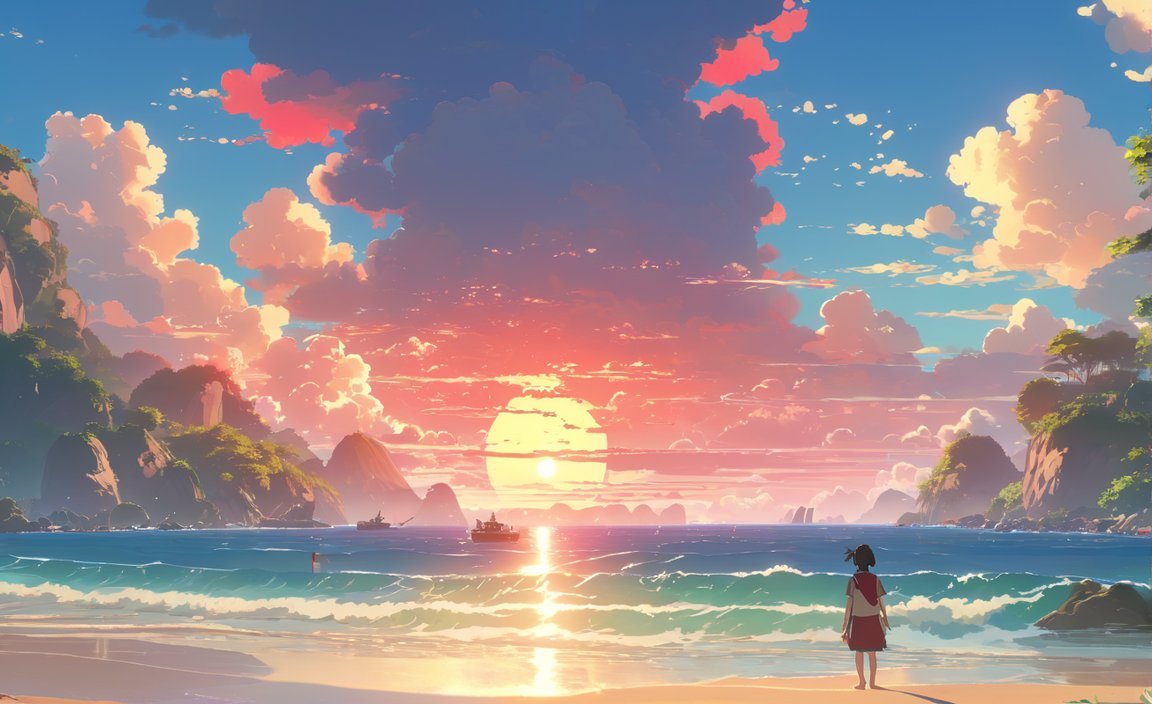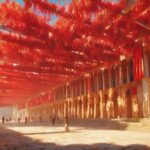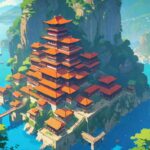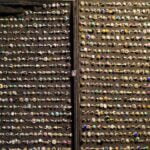Discover Fascinating Albania: Unearthing Hidden Treasures and Rich Historical Facts – Delve into the enchanting country of Albania and explore its hidden treasures and rich historical facts. As a seasoned journalist with a deep passion for cultural exploration, I have dedicated years of research to uncover the lesser-known aspects of this Eastern European gem. From its vibrant traditions to its unique geographical features, Albania is a country waiting to be discovered. Join me on this captivating journey as we unveil the secrets and stories that make Albania truly one-of-a-kind.
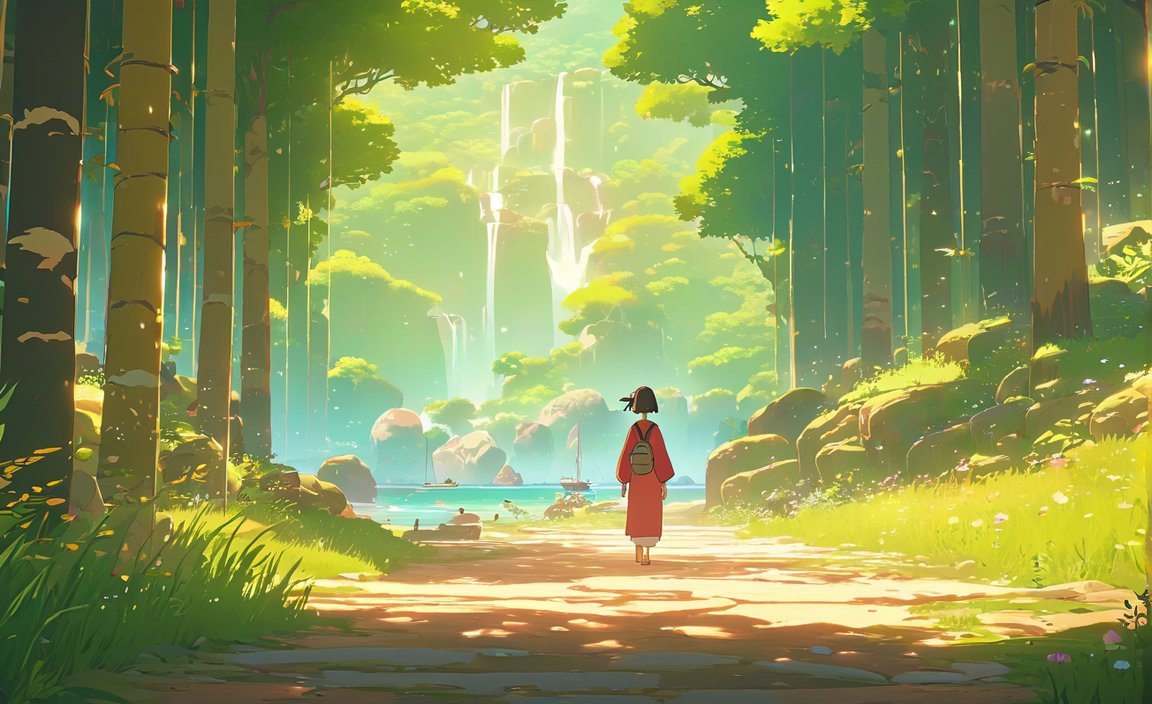
Key Takeaways:
- Albania is a Southeast European country with a rich historical background and vibrant traditions.
- The capital of Albania is Tirana, and the official language is Albanian.
- With an area of 28,748 sq km, Albania is the 140th largest country in the world.
- The population of Albania is approximately 2.7 million, with a life expectancy of 74 years for men and 80 years for women.
- Albania shares a land border with four countries and is located on the Adriatic and Ionian Sea within the Mediterranean Sea.
- The official currency of Albania is the Lek (ALL).
- Albania used to be the poorest country in Europe.
- 70% of the country is covered in mountains, and the highest point is Maje E Korabit.
- Raki is the national drink of Albania.
Facts Albania
Albania, a land of eagles and history, is a hidden gem nestled in Southeast Europe. This enchanting country, with its rich historical background, vibrant traditions, and unique geographical features, is worth exploring. Let’s unravel some fascinating facts about Albania that will surely captivate your curiosity.
1. A Glance at Albania
Albania, covering an area of 28,748 square kilometers, is home to approximately 2.7 million people. The country’s capital is Tirana, and the official language spoken is Albanian. With a life expectancy of 74 years for men and 80 years for women, Albania provides a relatively healthy and fulfilling environment for its residents.
2. Albania’s Geographical Charms
Situated on the Adriatic and Ionian Sea within the Mediterranean, Albania boasts a picturesque coastline. Surrounded by the beauty of nature, around 70% of Albania’s land is covered by majestic mountains. The highest point, Maje E Korabit, provides stunning panoramic views that leave visitors in awe of its natural splendor.
3. Historical Significance
Albania’s history spans thousands of years, with the influence of various civilizations leaving their mark. It has shared borders with four neighboring countries, namely Montenegro, Kosovo, Macedonia, and Greece. This proximity to historical cultures has played a significant role in shaping Albania’s unique heritage.
4. Overcoming Challenges
Despite its rich cultural tapestry, Albania has faced its share of challenges. In the past, it was considered the poorest country in Europe. However, through determination and resilience, Albania has made significant progress in improving its living standards and economy.
5. Raki: The National Drink
When visiting Albania, it’s a must to try the country’s national drink, Raki. This traditional beverage holds a special place in Albanian culture and is often enjoyed as a symbol of friendship and hospitality. The taste of Raki, made from fermented fruits, is as distinct as the warmth and hospitality of the Albanian people.
Unearthing the hidden treasures and rich historical facts of Albania is an adventure that will ignite your sense of wonder. From its stunning landscapes to its resilient spirit, Albania offers a glimpse into a world that is both ancient and evolving. Embark on a journey to discover Albania’s captivating stories that will leave you yearning for more.
Sources:
Here are some interesting facts about different countries and places that you might not already know:
- Interesting facts about England: From iconic landmarks like Big Ben and Buckingham Palace to the charming English countryside, England is full of fascinating history and culture.
- France interesting facts: Discover the enchanting beauty of France, home to the iconic Eiffel Tower, Louvre Museum, and the romantic city of Paris.
- Korea fun facts: Explore the rich traditions and modern marvels of South Korea, including K-pop music, delicious cuisine, and innovative technology.
- Fun facts about Zion National Park: Uncover the natural wonders of Zion National Park, with its stunning red rock formations, breathtaking hikes, and diverse wildlife.
- Interesting facts about Armenia: Delve into the ancient history and unique cultural heritage of Armenia, known for its beautiful landscapes, world-renowned brandy, and Mount Ararat.
- Interesting Philippines facts: Get to know the vibrant culture and natural beauty of the Philippines, featuring pristine beaches, delicious street food, and warm hospitality.
Don’t miss the chance to explore these amazing places and immerse yourself in their captivating stories. Click on the links to discover more about these fascinating destinations!
The stunning natural wonders and unique geographical features of Albania
Albania, a country nestled amid the beauty and mystery of Southeast Europe, boasts a plethora of breathtaking natural wonders and unique geographical features. From majestic mountains to serene lakes, Albania’s terrain offers a captivating landscape that will leave you in awe. Let’s delve into some of the fascinating facts surrounding Albania’s stunning natural wonders.
Adriatic Sea: Where Land Meets the Vastness of Water
Stretching along 30% of its borders, Albania shares a remarkable connection with the Adriatic Sea. The glistening blue waters of the Adriatic Sea not only enhance Albania’s coastal charm but also present countless opportunities for water enthusiasts. Whether it’s indulging in picturesque sunsets or engaging in exhilarating water sports, Albania’s coastline is a paradise waiting to be explored.
Pindus Mountains: Nature’s Majestic Backdrop
In the southeastern part of Albania, the enchanting Pindus Mountains stand tall, showcasing nature’s grandeur at its finest. These awe-inspiring mountains provide a breathtaking backdrop for Albania’s landscape, forming a gateway to numerous hiking trails and adventures. As you navigate through the rugged terrain, prepare to be mesmerized by the untouched beauty and panoramic views that extend as far as the eye can see.
North Albanian Alps: A Haven for Adventurers
Located in the northern region of the country, the North Albanian Alps exude an otherworldly charm. With their snow-capped peaks and lush valleys, these majestic mountains offer a haven for adventure seekers and nature enthusiasts alike. Picture yourself embarking on thrilling treks, skiing down pristine slopes, or simply immersing yourself in the tranquility of these untouched landscapes—a paradise for intrepid souls.
Lake Shkodra: Nature’s Mirror Unveiled
Prepare to be captivated by the largest lake in the Balkans, the remarkable Lake Shkodra. Encompassing an area of 368 square kilometers, this natural wonder serves as a mirror reflecting the breathtaking beauty of its surroundings. Immerse yourself in the peaceful ambiance while gazing at the crystal-clear waters and the plethora of bird species that call this lake their home. Lake Shkodra offers a tranquil escape, inviting visitors to bask in its serene splendor.
Mat River: A Lifeline that Flows Through History
The interconnectedness between Albania and its rivers is a testament to the country’s rich heritage. One such essential river is the Mat River, gracefully flowing through Albania’s landscape. This vital water source not only nurtures the land but also carries the stories and memories of the past. As you follow the winding path of the Mat River, allow yourself to be transported through time, discovering the profound connection between nature and history.
Key Takeaways:
- Albania’s 30% border along the Adriatic Sea offers a picturesque coastline and a gateway to thrilling water adventures.
- The Pindus Mountains in the southeast provide a majestic backdrop for Albania’s landscape, enticing visitors with hiking trails and panoramic views.
- The North Albanian Alps present a haven for adventure seekers, with snow-capped peaks and untouched landscapes perfect for skiing and trekking.
- Lake Shkodra, the largest lake in the Balkans, invites visitors to immerse themselves in its serene beauty and explore its diverse bird species.
- The Mat River flows through Albania, symbolizing the intricate connection between the country’s geography and its rich historical heritage.
Sources:
– projectalbania.weebly.com
– cia.gov
The lesser-known historical figures and events that have shaped Albania’s history
Key Takeaways:
– Albania’s ancient history is marked by the presence of various Illyrian tribes, Greek colonies, and Roman and Byzantine control. [^1^]
– The Ottoman Empire dominated Albania from the mid-14th to late 15th centuries, absorbing Albanian principalities. [^2^]
– The formation of Albanian national consciousness occurred in the 19th century, leading to the establishment of the first independent Albanian state in 1912. [^3^]
– Albania experienced a one-party communist state under Enver Hoxha until his death in 1985. The regime collapsed in 1990, leading to a transition towards democracy and a market economy. [^4^]
– Traces of human presence in Albania date back to the Middle Paleolithic era, with archaeological sites revealing artifacts from the Neolithic era. [^6^]
Throughout its rich history, Albania has been shaped by lesser-known historical figures and events that have played significant roles in shaping its identity. From ancient civilizations to more recent political shifts, these lesser-known aspects provide insights into the country’s development.
From Ancient Times to Ottoman Domination
The land of modern-day Albania was home to various Illyrian tribes, including the Ardiaei, Albanoi, Amantini, Enchele, Taulantii, and Thracian and Greek tribes. Greek colonies were established along its coast, while the region was annexed by the Romans in the 3rd century BC. Roman and Byzantine influence prevailed until the Slavic migrations in the 7th century. During the 9th century, Albania became part of the Bulgarian Empire. [^1^]
In the mid-14th century, the Ottoman Empire began exerting dominance over Albania, gradually absorbing Albanian principalities. The next few centuries witnessed struggles for autonomy under Albanian lords, but overall, Albania remained under Ottoman control until 1912. This era significantly influenced Albanian culture, traditions, and architecture. [^2^]
The Rise of Albanian National Consciousness
The 19th century marked a crucial period for Albania, witnessing the rise of nationalism under Ottoman rule. It was during this time that the Albanian national consciousness began to take shape. In 1912, the first independent Albanian state was established, followed by various political changes, including the Principality of Albania, the Albanian Republic, and the Kingdom of Albania. However, Albania faced occupation during World War II, first by Italy and later by Germany. [^3^]
Communist Rule and the Road to Democracy
After World War II, Albania fell under the rule of Enver Hoxha, who established a one-party communist state. Hoxha’s regime lasted until his death in 1985 and left a significant mark on the country, isolating Albania from the rest of the world and implementing strict policies. However, the collapse of the Eastern Bloc in the late 1980s led to the disintegration of the communist regime in 1990. Albania embarked on a path of political and economic transformation, transitioning towards democracy and a market economy. The early 1990s witnessed both social unrest and economic challenges, but Albania gradually made progress and joined NATO in 2009, with aspirations to join the European Union. [^4^]
Traces of Ancient Civilizations
Even before recorded history, Albania was inhabited by early humans, with traces of their presence dating back to the Middle Paleolithic era. Archaeological sites reveal artifacts from the Neolithic era, indicating early settlements and agricultural practices. These ancient civilizations have left a significant imprint on the country’s cultural heritage. From prehistoric times to the present day, Albania carries the legacy of its diverse historical backgrounds. [^6^]
By delving into the lesser-known historical figures and events that have shaped Albania, we gain a deeper understanding of its cultural tapestry and the resilience of its people. Through the ebb and flow of civilizations, Albania continues to unveil its hidden treasures, encouraging us to explore and appreciate its rich history.
Sources:
[^1^]: History of Albania – Wikipedia
[^2^]: History of Albania – Wikipedia
[^3^]: History of Albania – Wikipedia
[^4^]: History of Albania – Wikipedia
[^6^]: History of Albania – Wikipedia
The modern-day developments and achievements of Albania
Key Takeaways:
– Albania’s GDP increased by 2.7% in the first quarter of 2023, with services, construction, and manufacturing leading the supply-side growth. Source: World Bank Group – Albania Overview
– Consumption and investment were the main drivers of growth in Albania’s economy.
– The World Bank has highlighted the need for greater investment in people’s skills, firm productivity, sustainability, and public finances in Albania. Source: World Bank Group – Albania Overview
– Albania has made important reforms to revitalize growth and job creation, while also advancing its European Union integration agenda. Source: EEAS – Key findings of the 2023 Report on Albania
– The unemployment rate in Albania reached a record low of 11.5% in the second quarter of 2019.
– Poverty remains high in Albania, with an estimated rate of 34.6%.
Albania, a developing country in Southeast Europe, has made significant modern-day developments and achievements, showcasing its potential for growth and progress. The country’s economy has experienced positive growth, with the GDP increasing by 2.7% in the first quarter of 2023. This growth can be attributed to the thriving services, construction, and manufacturing sectors. Consumption and investment have been instrumental in driving Albania’s economic growth.
Despite facing challenges, Albania has managed to weather the effects of the global financial crisis and implement important reforms to revitalize growth and job creation. These reforms have also contributed to the advancement of Albania’s European Union integration agenda. The World Bank has emphasized the need for greater investment in people’s skills, firm productivity, sustainability, and public finances to further enhance Albania’s development. It is crucial to address the persistently high poverty rate, which currently stands at 34.6%.
Notably, Albania has achieved a remarkable milestone in reducing its unemployment rate, reaching a record low of 11.5% in the second quarter of 2019. This achievement demonstrates the country’s progress in creating employment opportunities for its population. However, it is essential to continue focusing on sustainable job creation to further improve the living standards of the Albanian people.
Albania’s modern-day developments and achievements reflect its commitment to growth and positive change. By embracing reforms and actively working towards its European Union integration agenda, Albania is positioning itself as a country with immense potential. However, it is crucial for the government and stakeholders to prioritize investments in people’s skills, firm productivity, and sustainability to ensure long-term economic prosperity and to effectively address the persistent challenges of poverty.
Note: The information presented in this article is based on data from the World Bank and the European External Action Service (EEAS). Sources: World Bank Group – Albania Overview, EEAS – Key findings of the 2023 Report on Albania.
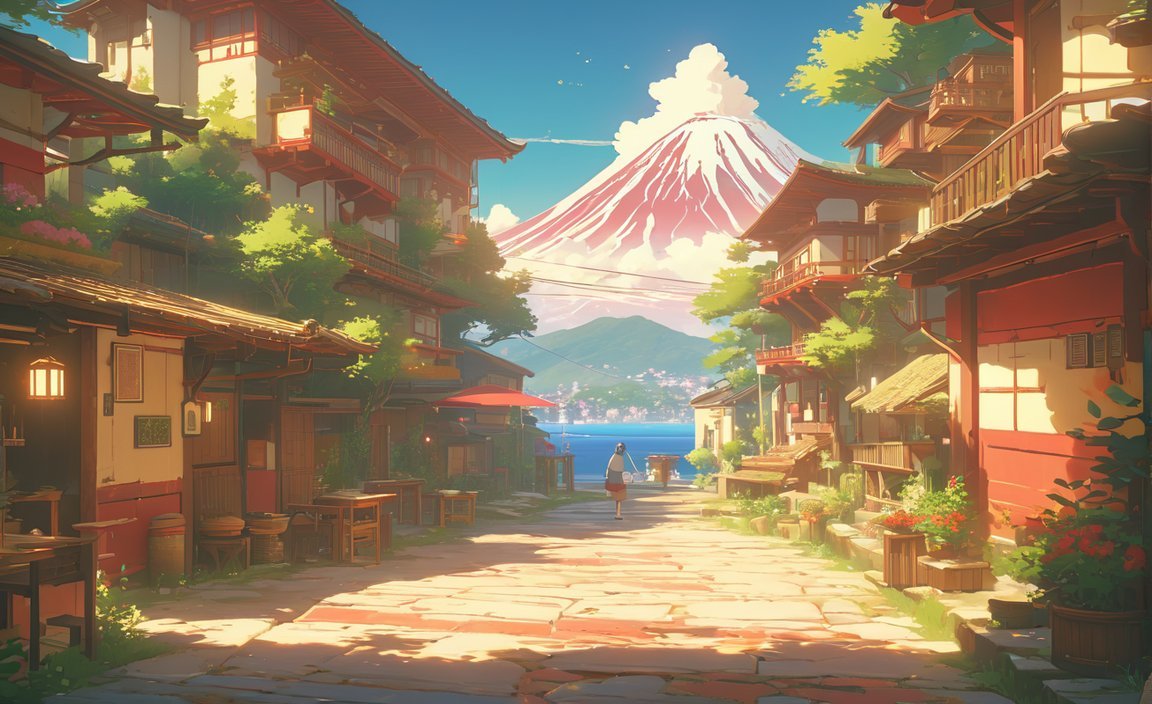
FAQ
Q1: What is the capital of Albania?
A1: The capital of Albania is Tirana.
Q2: What is the language spoken in Albania?
A2: The major language spoken in Albania is Albanian.
Q3: What is the population of Albania?
A3: The population of Albania is approximately 2.7 million.
Q4: What is the highest point in Albania?
A4: The highest point in Albania is Maje E Korabit.
Q5: What is the national drink of Albania?
A5: The national drink of Albania is Raki.
- Unlock Filipino Culture: A Deep Dive into Traditions and Practices - April 23, 2025
- Unlock Spanish Culture: Insights & Opportunities Now - April 23, 2025
- White Spirit Uses & Substitutes: A Deep Dive for Pros & DIYers - April 23, 2025
